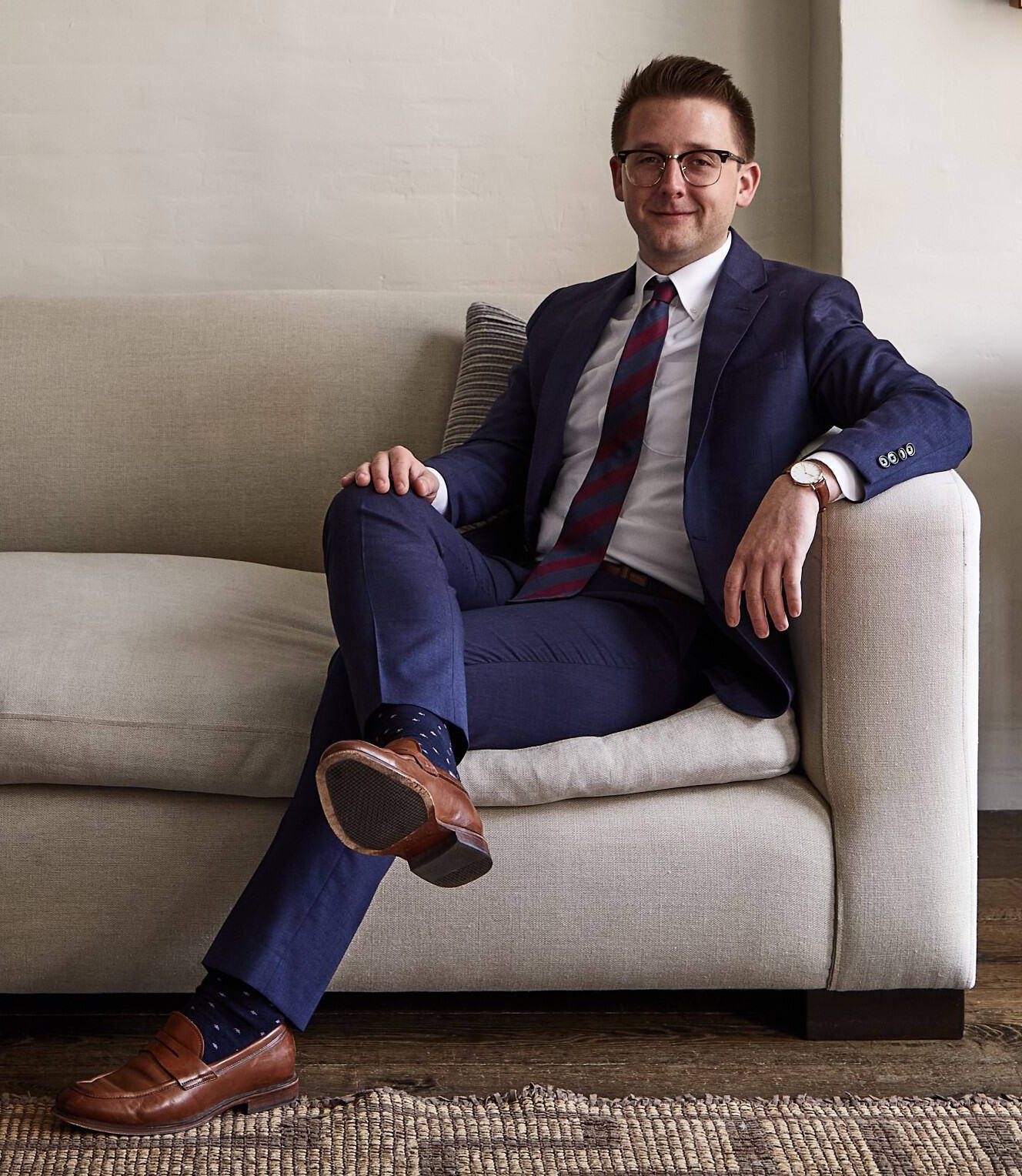Aaron Anderson enrolled at the University of South Carolina with a clear vision: pursue a degree in finance and launch a career in banking. But a single art history class during his first semester changed everything.
“I fell in love,” Anderson says. “There’s always this element of discovery, always something new to learn regardless of how seasoned you are. Art education never ends.”
Today, as head of sale for American art at Bonhams Auction House, a leading global art seller in New York City, he curates and manages auctions that shape the future of American art collecting. His work helps preserve and elevate artists’ legacies while connecting their pieces with collectors.
“In the auction world, we’re stewards of history,” he says. “We help find new caretakers for these great artifacts. It’s not just about the object—it’s about the legacy of the artist, the context, the conversation.”
Raised in Charleston, SC, Anderson had a knack for both numbers and creativity. In high school, he split his time between accounting classes and the art studio. As a freshman at USC, he took an introductory art history course that covered art from the Bronze Age to 1500 BCE to fulfill a general education requirement. After realizing that he could have a career in art, he added an art history minor to his finance major.
“The instructors I had at USC, Andrew Graciano, Lydia Brandt and others, were incredibly encouraging. They took time with students who were passionate,” he says. “Their teachings changed my life.”
Anderson's love for European art led him to an ultra-competitive internship at Sotheby’s in New York City during the summer before senior year. He spent three months studying 19th century European paintings up close and learning how a top global auction house operates.
“I left that program knowing that’s what I wanted to do,” he says.
The clarity he found propelled him to his first job at Christie’s auction house, where he jumped into the world of sales right after graduation. He returned to Charleston to work at a fine art gallery and found his niche in American art before finding his way back to New York City.
His day-to-day at Bonhams involves reviewing collections, appraising the value of art and preparing for major auctions—which he compares to “fashion week for the art market.” Each sale is a months-long effort, culminating in a single, highly visible event.
“You're building up to one moment,” he says. “Then it’s done and the work starts for the next one.”
For Anderson, the work is about far more than market value. It’s about preservation and storytelling. Working in auctions also has reinforced the importance of transparency in the art market.
“You’re expected to present a full picture: provenance, exhibition history, scholarly documentation,” Anderson explains. “That information lives on and is used by future historians.”
The foundation for that kind of rigor, he says, was laid at USC. The art history program gave him space to explore ideas deeply and build relationships with mentors who helped him see the possibilities beyond the classroom.
Dealing with art auctions is a far cry from the banking career he once envisioned, but Anderson can’t picture doing anything else now. “For most of us, this is also our hobby. We love art, and we get to do what we love every day.
“I couldn’t be happier with the path I chose.”
